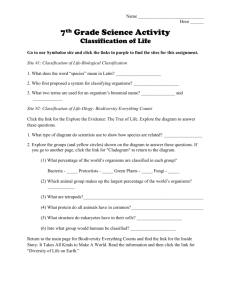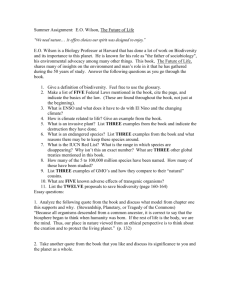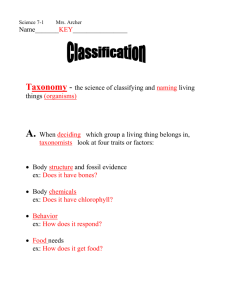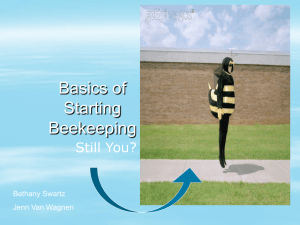Glossary - Project Oceanica
advertisement
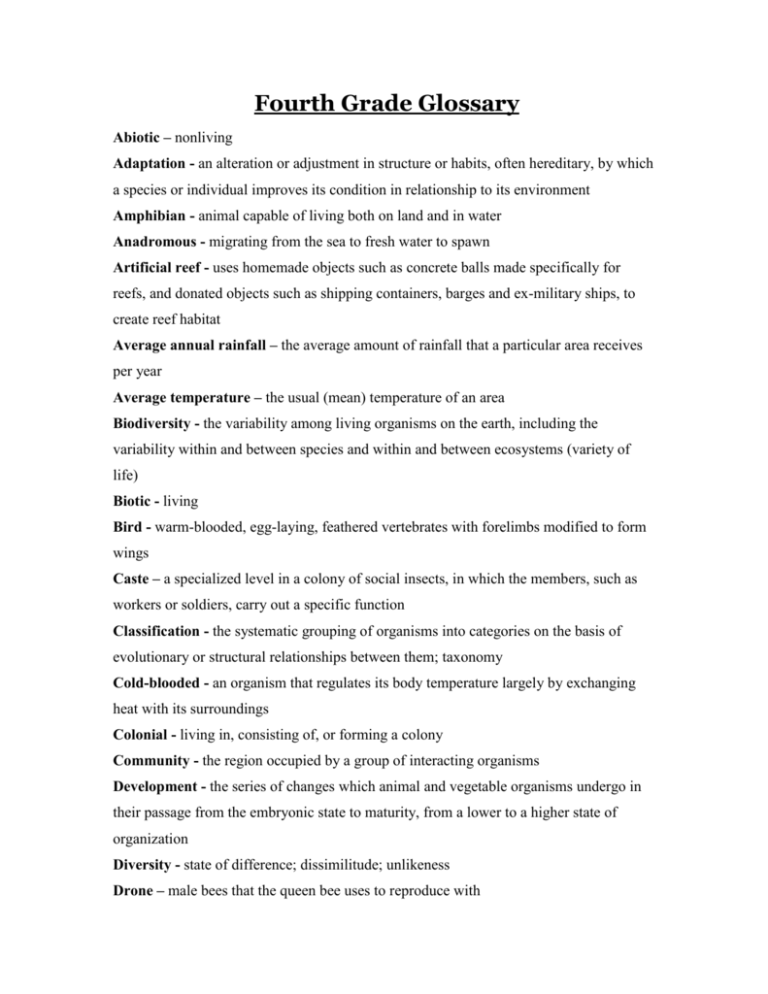
Fourth Grade Glossary Abiotic – nonliving Adaptation - an alteration or adjustment in structure or habits, often hereditary, by which a species or individual improves its condition in relationship to its environment Amphibian - animal capable of living both on land and in water Anadromous - migrating from the sea to fresh water to spawn Artificial reef - uses homemade objects such as concrete balls made specifically for reefs, and donated objects such as shipping containers, barges and ex-military ships, to create reef habitat Average annual rainfall – the average amount of rainfall that a particular area receives per year Average temperature – the usual (mean) temperature of an area Biodiversity - the variability among living organisms on the earth, including the variability within and between species and within and between ecosystems (variety of life) Biotic - living Bird - warm-blooded, egg-laying, feathered vertebrates with forelimbs modified to form wings Caste – a specialized level in a colony of social insects, in which the members, such as workers or soldiers, carry out a specific function Classification - the systematic grouping of organisms into categories on the basis of evolutionary or structural relationships between them; taxonomy Cold-blooded - an organism that regulates its body temperature largely by exchanging heat with its surroundings Colonial - living in, consisting of, or forming a colony Community - the region occupied by a group of interacting organisms Development - the series of changes which animal and vegetable organisms undergo in their passage from the embryonic state to maturity, from a lower to a higher state of organization Diversity - state of difference; dissimilitude; unlikeness Drone – male bees that the queen bee uses to reproduce with Ecological biodiversity - the variety of different wildlife communities found in an area Ecosystem - an ecological community together with its environment, functioning as a unit Ecotone - transitional zone between two communities containing the characteristic species of each Ectothermic - an organism that regulates its body temperature largely by exchanging heat with its surroundings Elevation - the height of a thing above a reference level; altitude Endothermic - an organism that generates heat to maintain its body temperature, typically above the temperature of its surroundings; warm-blooded Entomology - scientific study of insects Fish - cold-blooded aquatic vertebrates, characteristically having fins, gills, and a streamlined body Fly fishing – using the environmental needs of a fish, and the characteristics of the insects upon which they feed to replicate these insects with their flies to have a better chance of catching a fish Frequency -the property or condition of occurring at frequent intervals Functional biodiversity - variety of biological processes a particular ecosystem performs Genetic biodiversity - the variety of genes within a breeding population Habitat needs – the characteristics that a habitat must have in order to support a population Haploid - A structure for housing bees, especially honeybees (a colony of bees living in such a structure) Impermeable - impossible to permeate Impoundment – man-made wetlands constructed canals, drains, floodgates and trunks to control the amount of water in the rice fields Larva - the newly hatched, wingless, often wormlike form of many insects before metamorphosis Mammal - any of various warm-blooded vertebrate animals including humans, characterized by a covering of hair on the skin and, in the female, milk-producing mammary glands for nourishing the young Mayfly - slender insect with delicate membranous wings having an aquatic larval stage and terrestrial adult stage usually lasting less than two days Molt - to shed periodically part or all of a coat or an outer covering, such as feathers, cuticle, or skin, which is then replaced by a new growth Morphological polymorphism - the specialization of forms for the division of labor within a colony Niche - the particular area within a habitat occupied by an organism Nursing worker – bees that feed the developing larvae; the nursing behavior of the females is influenced by the queen Nymph - the larval form of certain insects, usually resembling the adult form but smaller and lacking fully developed wings Permeable - that can be permeated or penetrated, especially by liquids or gases Pitch - the distinctive quality of a sound, dependent primarily on the frequency of the sound waves produced by its source Pupa - the nonfeeding stage between the larva and adult in the metamorphosis of insects, during which the larva typically undergoes complete transformation within a protective cocoon or hardened case Region - an area of interest or activity Reptile - any of various cold-blooded, usually egg-laying vertebrates of the class Reptilia, having an external covering of scales or horny plates and breathing by means of lungs Reservoir - a natural or artificial pond or lake used for the storage and regulation of water Rice trunk gate – used to take advantage of the natural tidal fluctuations in the Coastal Plain rivers to flood and drain the fields River Otter - sociable aquatic animal widely distributed along streams and lake borders in North America Round Dance - when a foraging bee finds food close to the beehive, it performs its simplest dance where it runs around in a small circle to alert the other bees of the food source Runoff - rainfall not absorbed by soil Social colony – the queen, workers, and drones that comprise all the castes and form a community Social insect –animals that live in colonies and have social castes within their community; individuals of this species cannot exist except in close association with others of their species Sound waves – movement of sound through the air or other materials in a wave form created by the vibration of some object and detected by causing a sensor to vibrate Species biodiversity – the number of different species found in an environment Swarming - a large number of insects or other small organisms, especially when in motion, or a group of bees with a queen bee in migration to establish a new colony; when the queen bee’s ability to lay eggs diminishes Taxonomy - the classification of organisms in an ordered system that indicates natural relationships Topography - the surface features of a place or region on a map, indicating their relative positions and elevations Transect – a research method that is used by biologists to determine species biodiversity in an environment; a line is established through an area, and all of the plant and animal species observed along this line are identified and counted Vibrissae - any of the long stiff hairs that project from the snout or brow of most mammals Waggle dancing - a form of communication among honeybees usually to communicate sources of food Warm-blooded - an organism that generates heat to maintain its body temperature, typically above the temperature of its surroundings
